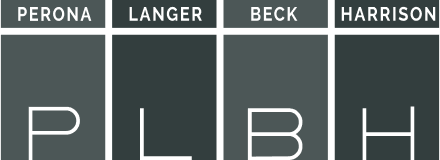
Suffering a workplace injury can significantly impact your ability to work and maintain your livelihood. For employees in California, proving permanent disability is often a key step in obtaining the compensation you deserve. Understanding the legal process and gathering the right evidence are crucial in demonstrating the extent of your injury.
Below, we’ll explore the steps involved and how PLBH can help you navigate the complexities of proving permanent disability after a workplace injury. Contact us at (800) 435-7542 for a free legal consultation.
Understanding Permanent Disability in California
In California, permanent disability refers to an injury or condition that permanently affects your ability to work. It may not mean a complete inability to work, but rather a lasting impairment that limits your physical or mental capacity. The California Workers’ Compensation system provides benefits for workers who can no longer perform their job duties due to a permanent disability.
Types of Permanent Disability
- Partial Permanent Disability: This applies when you are still able to work but with limitations.
- Total Permanent Disability: This applies when you are no longer able to work in any capacity due to the severity of your injury.
Each type of disability requires a different level of proof, which is why it’s important to understand the evidence needed to support your claim.
Steps to Prove Permanent Disability
Successfully proving permanent disability involves several key steps. Here’s an overview of what you can expect:
1. Obtain Medical Evidence
One of the most important components of proving permanent disability is medical evidence. This includes reports from your treating physician, specialist evaluations, and diagnostic tests such as X-rays, MRIs, or other relevant exams. The medical documentation should clearly outline your injury, its long-term effects, and your prognosis.
Make sure to follow up on all recommended treatments and keep detailed records of your recovery process. This will help strengthen your case by showing you’ve taken all reasonable steps to improve your condition.
2. Work with a Qualified Medical Evaluator (QME)
In some cases, the insurance company may dispute the extent of your disability. When this happens, you may need to undergo an evaluation with a Qualified Medical Evaluator (QME). The QME is an independent doctor assigned to assess the severity of your injury and provide an impartial report.
A favorable QME report can greatly bolster your claim. It’s essential to attend the evaluation and provide all relevant medical documentation to the QME for review.
3. Gather Vocational Evidence
If your injury prevents you from returning to your previous occupation, vocational evidence can help prove your inability to perform work. A vocational expert can evaluate your physical and mental limitations, compare them to your job requirements, and testify to how your disability impacts your earning potential.
The more detailed this analysis, the better your chances of proving the permanent effects of your injury.
Filing a Claim for Permanent Disability Benefits
Once you’ve gathered the necessary evidence, you can file a claim for permanent disability benefits through California’s Workers’ Compensation system. The compensation you receive will depend on your disability rating, which is a percentage assigned to reflect the severity of your condition.
Here are the basic steps for filing your claim:
- Submit a Disability Claim Form (DWC-1) to your employer or the workers’ compensation insurance carrier.
- Include all supporting documentation, such as medical reports, QME evaluations, and vocational assessments.
- If your claim is disputed, PLBH can help you appeal the decision and ensure your case is presented with compelling evidence.
Common Challenges in Proving Permanent Disability
Proving permanent disability can be challenging, especially if the insurance company disputes your claim. Some common challenges include:
- Insufficient Medical Evidence: Without thorough documentation, your claim could be denied.
- Discrepancies in Medical Evaluations: Conflicting reports between your physician and the QME could weaken your case.
- Disputes Over Disability Rating: The insurance company may argue that your condition doesn’t warrant a high disability rating.
If you face any of these challenges, seeking legal assistance from PLBH is critical. Our team can guide you through the appeals process and fight for the compensation you deserve.
Contact PLBH for Legal Assistance
Proving permanent disability after a workplace injury in California requires thorough documentation, expert evaluations, and an understanding of the legal system. If you are struggling with your claim or have questions about your disability benefits, PLBH is here to help. Contact us at (800) 435-7542 to schedule a consultation and get the legal support you need to move forward with confidence.
